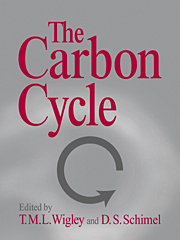Introduction
from I - INTRODUCTION
Published online by Cambridge University Press: 04 December 2009
Summary
The sixth annual Global Change Institute (GCI) was held in 1993 in Snowmass, Colorado, to evaluate the state of knowledge of the global carbon cycle. As in previous GCIs, an overarching goal was to increase the interdisciplinary communication between scientists in different disciplines. The 1993 GCI focused on those studying the various facets of the carbon cycle, including emissions of carbon dioxide, carbon in the oceans, the role of terrestrial ecosystems and land use, and measurements of carbon dioxide buildup in the atmosphere.
The goal of the institute was in part scientific, and in part to support the then-ongoing assessment of the carbon cycle by the Intergovernmental Panel on Climate Change (IPCC) (Schimel et al., 1995, 1996; Melillo et al., 1996). The IPCC had assessed the state of knowledge concerning the carbon cycle in its 1990 and 1992 reports (Watson et al., 1990, 1992); however, its 1994 and 1995 reports required a more in-depth analysis. The need for greater depth was driven by the 1992 United Nations Framework Convention on Climate Change (FCCC). Article 2 of the FCCC states as a primary objective that countries should seek to stabilize the concentrations of greenhouse gases in the atmosphere in order to stabilize future climate (within the limits of natural variability).
- Type
- Chapter
- Information
- The Carbon Cycle , pp. 3 - 6Publisher: Cambridge University PressPrint publication year: 2000
- 1
- Cited by



